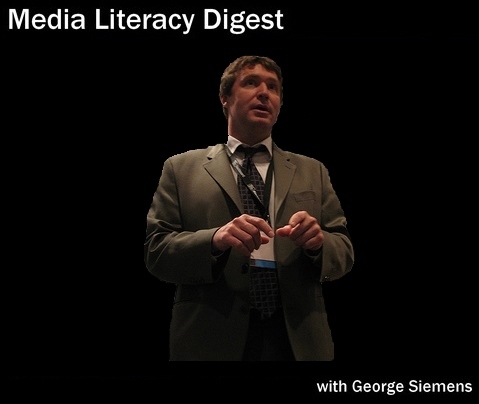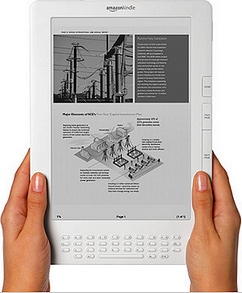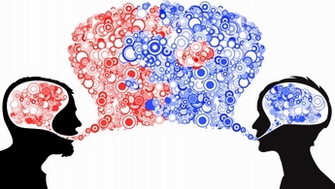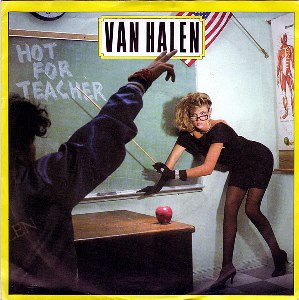Arquitectura de información y elementos básicos de Ciberperiodismo
Presentación del Mtro. Jorge Alberto Hidalgo Toledo elaborada para impartir una video-charla para la Universidad Técnica Particular de Loja, Ecuador
Espacio de reflexión teórica y crítica de la Alfabetización mediática e hipermediática, así como de los conceptos de: educomunicación, recepción crítica, educación para los medios, educación con los medios, educación a través de los medios y educación en medios.
Presentación del Mtro. Jorge Alberto Hidalgo Toledo elaborada para impartir una video-charla para la Universidad Técnica Particular de Loja, Ecuador
Publicadas por
Jorge Alberto Hidalgo Toledo
a la/s
6:35 p.m.
0
comentarios
![]()
Etiquetas: arquitectura de información, ciberperiodismo, we the media
Publicadas por
Jorge Alberto Hidalgo Toledo
a la/s
11:42 p.m.
0
comentarios
![]()
Etiquetas: Jorge Alberto Hidalgo Toledo, My Social Media Generation
The deadline for the Media Literacy Award is the 15th July.
Publicadas por
Jorge Alberto Hidalgo Toledo
a la/s
11:53 a.m.
0
comentarios
![]()
Etiquetas: media literacy
# Posted by Garlin II : 4:34 PMPromoting Internet adoption, digital inclusion, and digital media literacy is essential making universal broadband access successful. We don't put drivers behind the wheel without training. Likewise, we shouldn't give away Internet access without providing the tools & training to take advantage of it in productive, responsible, beneficial and entertaining ways.
During this most recent tough legislative session, our state took a big step towards achieving this thanks to the passage of House Bill 1701 which authorizes the state Department of Information Services (DIS) to move us closer to universal broadband adoption. This victory for technological equality was made possible thanks to the leadership of Representative Bob Hasegawa and the tireless effort of advocates like Reclaim the Media Executive Director Jonathan Lawson.
Funded in part by Federal ARRA dollars, the law has 3 pillars:
The law goes into effect on July 1st, 2009.
Publicadas por
Jorge Alberto Hidalgo Toledo
a la/s
11:52 a.m.
0
comentarios
![]()
Etiquetas: digital media literacy
Inside this Media Literacy digest: Develop a critical attitude. Filter the media buzz. Learn to separate the news from the noise and make sense of the information that interests you. Here is George SiemensMedia Literacy digest: learning, networks, knowledge, technology, trends by George Siemens I’ve been in Italy for about a week - first a trip to Milan to present at theInternational Enterprise 2.0 conference organized by Open Knowledge. Videos of presentations are available on the official site (most are in English, even though titles are in Italian. I presented on Knowledge without Management). Useful case studies of emerging technology implementations were presented in the afternoon. After Milan, I went to Rome for a few days of sight seeing and generally consuming food. I found an interesting illustration of "old meets new" in Castel Sant’Angelo. An exhibit - Luminescenze 2009 (see images on Flickr) was held near the top floor. The use of QR codes, facebook, flickr, etc. offered a stark contrast to the need to physically “be there” to experience the ambiance of the castle. Each offers a value point - neither is fully complete without the other. Transformative changes in other information-based industries should capture the attention of educators. A few recent newspaper-related stories: I think you could replace newsroom references with classrooms... Discussions of language results in controversy that falls broadly into two camps: Chomsky, Pinker, and others occupy the innate camp and numerous others occupy a camp that can be described as social-interactionist, connectionist, and emergent. This debate will not be resolved any time soon. The idea of language adds an interesting perspective on speaking and toolmaking as similar / related activities: Toolmaking also requires hands capable of shaping tools, while speech requires a throat capable of vocalization.” Reading through the article, I was surprised how much the discussion on language shares with general discussions of learning… I’ve long enjoyed Chris Lott’s contribution to learning and technology. He brings his passion of poetry, philosophy, and technology into an informed world view. First time I met him face to face, we spent time arguing about Prensky (he challenged my notion that Prensky took edutech in the wrong direction. Chris argued that for a time, Prensky gave voice to a distinction that many were beginning to notice). Chris is a critic and an idealist (which is a positive). I just came across a presentation he delivered titled From Plato to Perl: the Problem of Sociality and the 'Idea'. He explores the mechanical predecessors of the digital age (fascinating to think about the many "near hits" in what eventually became the internet). A critical argument is advanced at about the 15:30 mark on how we are erroneously applying "mechanisms that we don’t understand", "retaining the least productive mechanisms" of scholarship and humanism and applying mechanical approaches to education. If you prefer text to video, similar ideas are expressed in this paper.Media literacy is the ability to analyze and evaluate the media to which we are exposed; it is a complex subject. Although most of us suffer from sensory over-stimulation from media, most do not have the time, or do not take the time, to analyze the consequences of this exposure. (Source: University of New Mexico)

Photo credit: Teemu Arina edited by Daniele BazzanoeLearning Resources and News
Old Meets New

That Failing Newspaper Industry...

“The stats show that total newspaper ad sales dropped by an unprecedented 28.28% in the first quarter of 2009, a deep plunge that represents a loss of more than $2.6 billion in ad revenue compared year-over-year.”
“But we’re hiding much of our newsrooms’ value behind a terribly anachronistic format: voiceless, incremental news stories that neither get much traffic nor make our sites compelling destinations. While the dispassionate, what-happened-yesterday, inverted-pyramid daily news story still has some marginal utility, it’s mostly a throwback at this point - a relic of a daily product delivered on paper to a geographically limited community.”
Tool Making and Language

“The ingredients of speaking and toolmaking are similar. Both require a brain capable of complex imitation and a community that wants to share information.
From Plato To Perl: The Problem of Sociality and The 'Idea'

Good use of stories and example throughout the talk (Babbage, Tennyson).
Originally written by George Siemens for elearnspace and first published on Jun 12th, 2009 in his newsletter eLearning Resources and News.
Publicadas por
Jorge Alberto Hidalgo Toledo
a la/s
11:51 a.m.
0
comentarios
![]()
Etiquetas: media literacy
For this post, I am going to be talking about a type of portrayal in the media - professionalism. I chose this topic because I am often frustrated by supposed professionals (particularily female professionals) who look like they should be in Van Halen's "Hot For Teacher" music video.
 http://dic.academic.ru/pictures/enwiki/72/Hot_for_Teacher.jpg
http://dic.academic.ru/pictures/enwiki/72/Hot_for_Teacher.jpg
It seems that professionalism is rarely represented as, well, professionalism. Many TV shows that are set in or feature professional settings lack the qualities of the professionalism that is expected of one in the real work place. For starters, lets look at professional attire. In a show that completely revolved around the events of a professional workplace, "Ally McBeal", little actual professionalism can be seen, particularly in the clothing. In the show, Ms. McBeal's office clothing staples were mini-skirts and décolletage bearing tops. In the real workplace, such attire is inappropriate as the professional workplace is not where one should be concerned with being "sexy" but where one is focused on work. This portrays the professional working world as a place where looking "sexy" is appropriate and important. This trend of "sexy" work-ware is something I have noticed in clothing stores. I have noticed mini-skirts being sold in the "career" sections of many stores geared towards young women. This demonstrates how big an impact TV can have on culture.
Another aspect of professionalism portrayed in TV shows are relationships within the professional setting. Many relationships in the professional real that appear in TV shows are portrayed as ones based on sexual attraction/desire. In a real workplace, relationships like this can be considered inappropriate. Take for instance the TV show "Friends". In season 6 one of the characters, Ross, is a professor at a local university. In episode 18, Ross brings in one of his teacher evaluations filled out by one of his students. The evaluation has numerous praises of his teaching and a mentioning of him as a "hot professor". As he discovers who this student is, he decides to go on a date with her when he realizes she will technically not be his student at the semester's end. Even though it seems okay, there is still a need for them to hide their relationship as they date. In the end, they get "caught," but never get in trouble. This shows that having unprofessional tendencies may not have consequences.
Lastly, I'd like to talk about representations of professional behavior on television. To do so, I will look at the prime time drama "House, MD". Any avid watcher of this shows knows of Hugh Lorie's character, House, and his drug use. Throughout the show he has continual need to take drugs. His boss and employees are well aware of his problem and do things to try to help him, but he never has "real" consequences such as loosing his job. He is threatened many times, but on he goes, treating patients while on drugs. Below you will see a montage of clips of House and his drug use:
Even though he has prescriptions for some of the drugs he takes, he is often confronted by coworkers on his drug dependence, but rarely shown real consequence. This again, like "Friends", and "Ally McBeal" gives a portrayal of there being no consequences to acting unprofessionally, ultimately skewing the idea of professionalism.
With these portrayals, it seems television often portrays professionalism in a way that is not actually professional. This gives a limited view of the professional world as there is little behavior or emphasis on appropriate professional dress, relationships, and behavior. A lot of professional representations on TV show mostly inappropriate professional behavior. These representations make it seem as if there is little value in being professional anymore. Things are becoming more and more casual in our culture, but professionalism is something that is imporant to keeping the workplace productive and focused.
Publicadas por
Jorge Alberto Hidalgo Toledo
a la/s
11:38 a.m.
0
comentarios
![]()
Etiquetas: media representations
Retomando a Scolari y a nuestra necesidad de construir metáforas (para –en primer lugar- autoexplicarnos), sobre la cual trabajo es la del Continente digital. Bajo esta óptica yo ubico múltiples sujetos inmersos en el complejo digital, incluso antes de la llegada al Continente mismo y su Netnografía. Hago mención a ellos por si sirven para seguir reflexionando:
1) El Alquimista: aquél visionario que detecta una necesidad, un problema, un área de oportunidad y hace uso de sus lecturas, bagajes y recursos teóricos para plantear una solución tecnológica sin llegar muchas veces al desarrollo de la misma, sólo a su especulación. (Los teóricos)
2) El inventor: aquél que retoma los postulados teóricos del alquimista y desarrolla con todos los “códigos” y recursos tecnológicos a su alcance para construir o reconstruir (mush-ups) las naves sobre las cuales saldrán otros a buscar rutas para “comercializar especias”, atraer “tesoros” o conquistar territorios (Los Programadores)
3) El conquistador: aquél que percibe el potencial de negocio y mercado detrás de la tecnología; se actualiza, capacita, forma, domina, compra y vende la misma pero su motor no es el dominio del navío, la maravilla del viaje, sino lo que traerá a su regreso. (Microsoft, Apple)
4) El piloto y el marinero: aquellos que conocen a la perfección la operación del barco, las condiciones de viaje, el cómo lidiar tormentas y llegar a puerto seguro. Su compromiso está con la tripulación, su amor y pasión es el barco mismo y su conquista está en legitimidad que ganan entre los demás marinos a quienes presumen todos sus viajes (pensemos en los desarrolladores de código abierto y en la comunidad Linux)
5) El viajero: el que circula de navío en navío (su condición es transmedial, apasionada pero no comprometida, hoy va en barco, mañana en tren…) (Quizá aquí están los Pioneros adultos de Balardini y los Beta testers)
6) El misionero: el que viaja a nuevas tierras a difundir, sembrar e inculturar lo que otros Alquimistas han generado en su territorio de origen (Aquí incluiría a los instructores, universidades y docentes que nos encargamos de generar expertos web ya sea para que se conviertan en otros alquimistas, inventores y conquistadores; no sé si estos serían los inmigrantes de Alejandro)
Hasta aquí yo encuentro una serie de actores del “viejo mundo” que cuentan con una serie de usos, costumbres, apropiaciones y habilidades digitales, a veces mayores que las de los nativos. En términos de competencias ¿quién es más nativo, colono o inmigrante de todos ellos?, no lo sé. Lo que sí me queda claro es que generalmente partimos, en nuestra construcción teórica de lo ya dado y no del cómo llegamos a ese estadio.
Ahora bien ya dentro del “Continente digital” o como generaciones interactivas, hipermediales o digitales ubico a otras tribus.
7) Los nativos olvidados: aquellos sectores de la población excluida del proceso de digitalización.
8) La resistencia: grupos de nativos que aún cuando tienen dominio y competencias digitales se niegan a llevar una vida digital. Algunos de ellos también son grupos de choque en la misma red.
9) Los autoexcluidos: que no quieren participar del mundo digital, aunque tienen acceso a la tecnología. Se automarginan por ideología, destreza, edad o porque no comparten los beneficios que otros ven.
10) Los evangelizados: aquellos que fueron capacitados, formados e inculturados por los misioneros. Llevan una vida digital activa y receptiva a las nuevas prácticas que difundan los misioneros.
a. Los evangelizados sincréticos: mantienen sus tradiciones y el pensamiento análogo en modo híbrido con la vida digital.
b. Los mártires: son verdaderos autoconvencidos de la vida digital. Muchos de ellos no sólo son ortodoxos en la práctica de los principios, tradiciones, vivencias y prácticas tecnológicas, sino que su defensa es radical.
c. Los apóstoles: son los early adopters que se encargan de difundir y promover las innovaciones entre sus pares para hacerlos partícipes de los nuevos desarrollos. Terminan siendo más efectivos que los misioneros en proceso de inculturación digital.
d. Los mercaderes: aquellos que se encargan de construir el mercado (heavy users), la gran masa de los que adoptan las tecnologías, el corazón de la curva de adopción de innovaciones tecnológicas de Rogers.
e. Los arribistas: seguidores que adoptan las modas y tendencias para ser aceptados y valorados por sus pares.
11) Los autodidactas: aquellos que se autoforman competencias y destrezas digitales pues gustan de los desarrollos tecnológicos aún cuando su tribu no participe de ellos.
12) Los mestizos digitales: segunda generación de usuarios y que realmente nacen en el continente digital. Aún cuando su tribu (generación) vive ya en el mundo digital no todos participan en ella del mismo modo y se involucran con cada medio en diferente medida.
13) Los latifundistas: los que se apoderan de los liderazgos digitales para dominar a sus pares o a los usuarios venideros.
14) Los esclavos tecnológicos: los altamente comprometidos e involucrados con cierta tecnología generando dependencia aún cuando la tendencia y los usos migren.
15) Los extranjeros: que van y vienen de lo análogo digital pero sin comprometerse con la tecnología
16) Los Inmigrantes: los que desechan poco a poco el mundo análogo para vivir en las parcelas digitales
17) Los exiliados: los que por necesidad u obligación se tienen que comprometer con la tecnología aún cuando no gusten de ella.
Y así podríamos seguir ampliando nuestra lista. A lo que voy es que las condiciones históricas, circunstanciales, sociales, individuales a todos nos han llevado a involucrarnos de alguna u otra manera con las tecnologías de información. Independientemente, o quizá correlativamente a ello, cada uno guarda un compromiso e involucramiento con las tecnologías de información.
Para mí, lo apasionante es conocer de cada uno de ellos sus motivaciones, significaciones, usos y apropiaciones. Considero que son tan valiosas e importantes las vivencias digitales de un chico que nació, creció y se desarrollo en medio del boom digital, como las que tiene su madre que por primera vez usa un celular, el padre que depende de una laptop para hacer su trabajo, como de la tía que sólo usa el correo para mandar cadenas y postales virtuales, la abuela que piensa que un control remoto es obra del diablo, el maestro que se siente orgulloso armando una presentación de power point o el párroco que comparte sus homilías vía podcast.
Sin duda, el tiempo que nos ha tocado vivir guarda tantos misterios y maravillas como el que le tocó a los hombres, que como digo, tocaron estas tierras sin saber que al día de hoy nos seguiríamos preguntando por qué salieron de casa y qué se llevaron de aquí después de la conquista.
Publicadas por
Jorge Alberto Hidalgo Toledo
a la/s
8:39 a.m.
0
comentarios
![]()
Etiquetas: cultura digital, tipología web


|
Search this site
or
the web
powered by FreeFind |
|
|






My blog is worth $10,161.72.
How much is your blog worth?